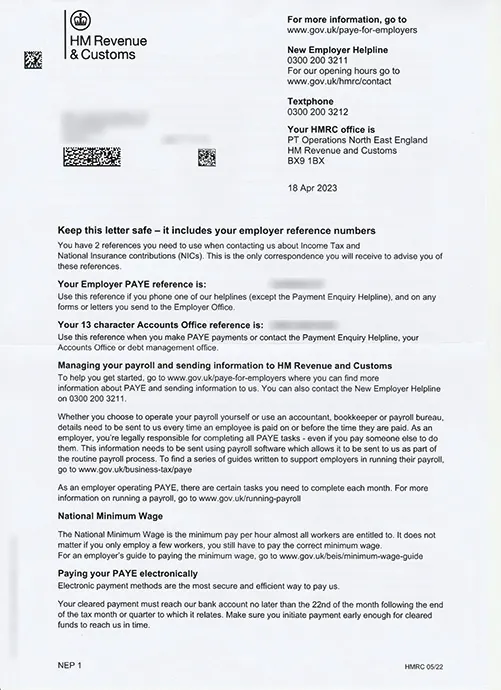The notice is received on registration with HMRC for PAYE. This contains two important references that must be kept safe on records, the Employer PAYE reference and Accounts Office reference.
PAYE is a method of paying income tax on employment income. It is HM Revenue and Customs’ (HMRC) system to collect Income Tax and National Insurance from employment. This requires employers to timely process payroll on or before initiating payments to their employees.
An employer PAYE reference is a unique code that HMRC uses to identify the business for employer PAYE purposes. It consists of:
For example: 123/AB12345
An Accounts Office reference is a unique code of 13 characters that HMRC uses to identify and link an employer’s PAYE payments to their PAYE Online account. It consists of:
For example: 123PA12345678 or 123PA1234567X.
Depending upon the pay frequency to your workers, generally in regards to a monthly salary payment, tax months run from the 6th of one month to the 5th of the next. Every time you pay your employees’ on or before your employees’ payday, determine workers’ pay, deductions including tax and NI, employers’ NI that needs to be additionally paid to prepare a payslip. Report all of this to HMRC in a Full Payment Submission (FPS), and then pay your tax liabilities to HMRC.
